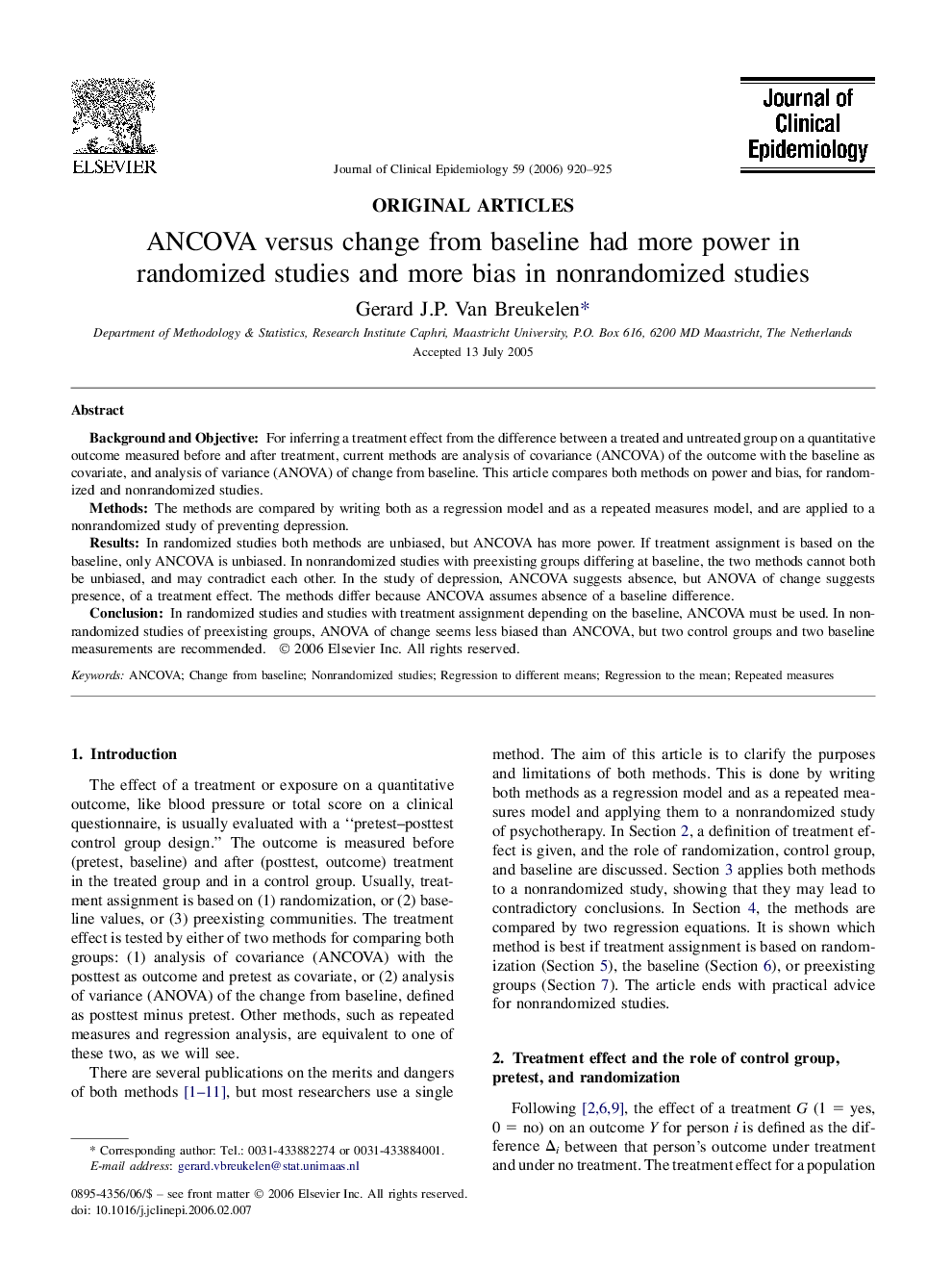| Article ID | Journal | Published Year | Pages | File Type |
|---|---|---|---|---|
| 1083432 | Journal of Clinical Epidemiology | 2006 | 6 Pages |
Background and ObjectiveFor inferring a treatment effect from the difference between a treated and untreated group on a quantitative outcome measured before and after treatment, current methods are analysis of covariance (ANCOVA) of the outcome with the baseline as covariate, and analysis of variance (ANOVA) of change from baseline. This article compares both methods on power and bias, for randomized and nonrandomized studies.MethodsThe methods are compared by writing both as a regression model and as a repeated measures model, and are applied to a nonrandomized study of preventing depression.ResultsIn randomized studies both methods are unbiased, but ANCOVA has more power. If treatment assignment is based on the baseline, only ANCOVA is unbiased. In nonrandomized studies with preexisting groups differing at baseline, the two methods cannot both be unbiased, and may contradict each other. In the study of depression, ANCOVA suggests absence, but ANOVA of change suggests presence, of a treatment effect. The methods differ because ANCOVA assumes absence of a baseline difference.ConclusionIn randomized studies and studies with treatment assignment depending on the baseline, ANCOVA must be used. In nonrandomized studies of preexisting groups, ANOVA of change seems less biased than ANCOVA, but two control groups and two baseline measurements are recommended.
